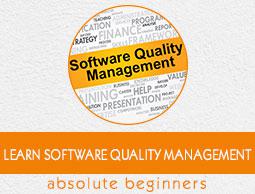Software Quality Factors
The various factors, which influence the software, are termed as software factors. They can be broadly divided into two categories. The first category of the factors is of those that can be measured directly such as the number of logical errors, and the second category clubs those factors which can be measured only indirectly. For example, maintainability but each of the factors is to be measured to check for the content and the quality control.
Several models of software quality factors and their categorization have been suggested over the years. The classic model of software quality factors, suggested by McCall, consists of 11 factors (McCall et al., 1977). Similarly, models consisting of 12 to 15 factors, were suggested by Deutsch and Willis (1988) and by Evans and Marciniak (1987).
All these models do not differ substantially from McCall’s model. The McCall factor model provides a practical, up-to-date method for classifying software requirements (Pressman, 2000).
McCall’s Factor Model
This model classifies all software requirements into 11 software quality factors. The 11 factors are grouped into three categories – product operation, product revision, and product transition factors.
Product operation factors − Correctness, Reliability, Efficiency, Integrity, Usability.
Product revision factors − Maintainability, Flexibility, Testability.
Product transition factors − Portability, Reusability, Interoperability.
Product Operation Software Quality Factors
According to McCall’s model, product operation category includes five software quality factors, which deal with the requirements that directly affect the daily operation of the software. They are as follows −
Correctness
These requirements deal with the correctness of the output of the software system. They include −
Output mission
The required accuracy of output that can be negatively affected by inaccurate data or inaccurate calculations.
The completeness of the output information, which can be affected by incomplete data.
The up-to-dateness of the information defined as the time between the event and the response by the software system.
The availability of the information.
The standards for coding and documenting the software system.
Reliability
Reliability requirements deal with service failure. They determine the maximum allowed failure rate of the software system, and can refer to the entire system or to one or more of its separate functions.
Efficiency
It deals with the hardware resources needed to perform the different functions of the software system. It includes processing capabilities (given in MHz), its storage capacity (given in MB or GB) and the data communication capability (given in MBPS or GBPS).
It also deals with the time between recharging of the system’s portable units, such as, information system units located in portable computers, or meteorological units placed outdoors.
Integrity
This factor deals with the software system security, that is, to prevent access to unauthorized persons, also to distinguish between the group of people to be given read as well as write permit.
Usability
Usability requirements deal with the staff resources needed to train a new employee and to operate the software system.
Product Revision Quality Factors
According to McCall’s model, three software quality factors are included in the product revision category. These factors are as follows −
Maintainability
This factor considers the efforts that will be needed by users and maintenance personnel to identify the reasons for software failures, to correct the failures, and to verify the success of the corrections.
Flexibility
This factor deals with the capabilities and efforts required to support adaptive maintenance activities of the software. These include adapting the current software to additional circumstances and customers without changing the software. This factor’s requirements also support perfective maintenance activities, such as changes and additions to the software in order to improve its service and to adapt it to changes in the firm’s technical or commercial environment.
Testability
Testability requirements deal with the testing of the software system as well as with its operation. It includes predefined intermediate results, log files, and also the automatic diagnostics performed by the software system prior to starting the system, to find out whether all components of the system are in working order and to obtain a report about the detected faults. Another type of these requirements deals with automatic diagnostic checks applied by the maintenance technicians to detect the causes of software failures.
Product Transition Software Quality Factor
According to McCall’s model, three software quality factors are included in the product transition category that deals with the adaptation of software to other environments and its interaction with other software systems. These factors are as follows −
Portability
Portability requirements tend to the adaptation of a software system to other environments consisting of different hardware, different operating systems, and so forth. The software should be possible to continue using the same basic software in diverse situations.
Reusability
This factor deals with the use of software modules originally designed for one project in a new software project currently being developed. They may also enable future projects to make use of a given module or a group of modules of the currently developed software. The reuse of software is expected to save development resources, shorten the development period, and provide higher quality modules.
Interoperability
Interoperability requirements focus on creating interfaces with other software systems or with other equipment firmware. For example, the firmware of the production machinery and testing equipment interfaces with the production control software.


